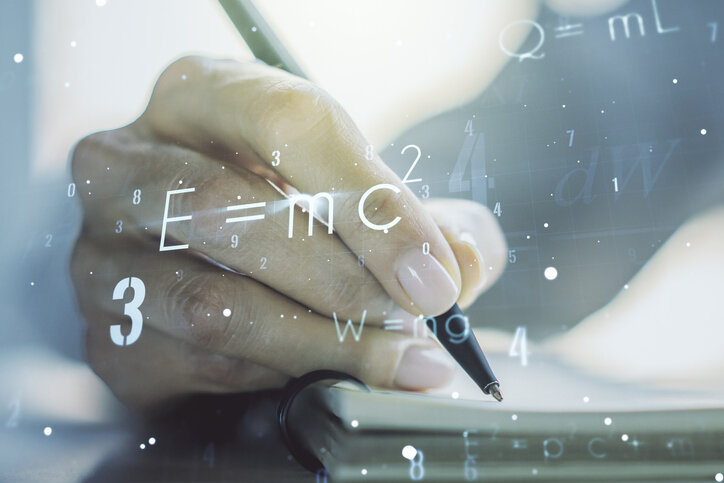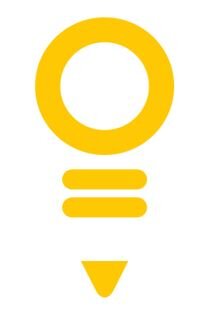“If the pandemic we are experiencing today had occurred in 1985, academic continuity would not have been possible at the level we experience it today.”
This is a popular article made in collaboration with Tecnológico de Monterrey’s Writing Lab.
In 1985, I was a university student and lived through what was undoubtedly Mexico City’s worst crisis, an 8.1 magnitude earthquake. Many of the city’s services, such as transportation, commerce, and education, were halted in the aftermath. Weeks passed before the resumption of classes was announced, which had to be communicated via television or newspaper. With an estimated 40,000 deaths (beyond the 5,000 officially recognized), this event reminds us of the silent global tragedy of the COVID-19 pandemic, with more than 38,000 deaths to date in Mexico City plus the prolonged suspension of classes and businesses and services, consequences like the 1985 earthquake.
There is a big difference between these two events that today’s generations would not realize: the daily presence of the internet in our lives did not exist at the time of the earthquake. In the educational field, as in many other areas, we have a vital advantage. If the pandemic had occurred in 1985, academic continuity would not have been possible at the level we experience today. Now, ten years after the start of the mobile device revolution, hybrid learning strategies have leaped onto the public scene in almost all areas, countries, schools, and educational sectors.
“The experience that the confinement left us around the digital models implemented during the pandemic must be capitalized and shared even when the classes return to the face-to-face format.”
For decades, Tecnológico de Monterrey has made technologies for education centrally important. Thanks to the commitment of its teachers and the permanent training programs in the institution, the transition from a face-to-face education to a virtual modality was quite natural. Still, the implementation of the Digital Flexible Model to enable the academic continuity of the students presented many significant challenges to preserve course quality and attend to the students, especially the emotional consequences of the isolation necessitated by the pandemic.
Throughout my teaching career, I have employed technology in the classroom for science education. During the COVID-19 pandemic, I integrated technologies for mathematics and physics education to enable my students to undertake their own theoretical and experimental developments. I strongly desire that they attain their goals and accomplish even small changes that enable them to grow; I also want to offer them timely and effective feedback.
Teaching physics in a remote hybrid model
Teaching physics under the Flexible Digital Model presents a significant test. Although the experimental aspects of physics can be fun, the emphasis on theory in the course becomes very problematic. Teaching physics under the Tec21 Educational Model using digital technologies is a great challenge to a teacher. When designing the courses “Computational Modeling of Motion” and “Computational Modeling Employing Laws of Conservation,” I assumed the following from lessons learned:
-
Students have varying levels of interest in Physics depending on the program in which they are enrolled.
-
Students attain different mastery levels and have varying perceptions of the subject during the course.
-
The Tec21 Educational Model pursues gradual competency-based learning, which each physics student achieves by applying theory in complex situations.
Thus, in my planning, understanding that the courses focus on computational simulation rather than experimental physics, I considered the competencies in the two areas (math and physics) complementary.
I also considered the different learning styles in my students’ spectrum. I gave structured access to the course content on a single webpage called Virtual Classroom. I created a series of alternative materials so the students could select those that would facilitate their learning, a series of classic exercises, exercise resolution videos, videos for computational implementation, and specialized programming materials where physics was the focus of interest and application. All were on one page for two types of class: one visually or formally directed to theory and the other oriented to computational physics applications. Here I was looking for my students to see or explore the physical simulations and build them, which was the path to developing targeted competencies in the courses I taught, supported by two fellow teachers in mathematics and computing (Delgado, 2019).
Results
Measuring and researching my students’ behaviors and practices to understand them better was extremely rewarding. Students could have a diverse and dispersed development in theoretical Physics based on their interests and competencies. However, they also showed great interest and performance in programming, understandable, given the academic programs in which they were enrolled. This orientation made them learn physics and mathematical topics beyond the classical course. One of the relevant results is that the premises of the Tec21 Educational Model to develop the competencies declared for the course were fulfilled. At the same time, I had to understand that the skills to perform calculations and apply physical principles would develop gradually through various parallel or subsequent courses, not just this one.
Another aspect of learning for me was being present for my students, accompanying them. I used social media communication and alternate messaging, which were very effective. I was continuously available to the students to resolve questions, clarify confusion, schedule advice, and provide efficient, documented feedback that exceeded the consulting possible in the face-to-face course. I made the consulting materials available to the entire learning group. On the other hand, I should mention that the students were highly respectful of the teacher’s time. The students’ final opinions of the course mentioned accessibility, contact with the teacher, and materials for different learning styles, among others. It let me know how I could more easily guide their learning and impact their diverse interests in Physics. Some relevant comments from the students were: “His accompaniment is one of his greatest qualities,” “Very dynamic and accessible,” and “He displays much knowledge and has materials for independent study.”
Reflection
Within the learning block structure framed by the Tec21 Educational Model, the students were autonomous and at the same time interested in Applied Physics simulations. This phenomenon was a lesson for me and a change of vision about how the students learn and wh
at I can continue doing in their subsequent physics courses. Moreover, the students also learned a lesson about the teaching of this topic under the Digital Flexible Model. One area of opportunity is to encourage social learning further. It is not easy for the students to communicate and comprehend their peers’ diverse styles and interests during the confinement. As professors, we must not leave them alone in this task.
We must capitalize on the experience with the digital models during the pandemic’s confinement and share even when classes return to the face-to-face format. We must consider, document, and share the lessons we learned as teachers and citizens. The internet, which did not exist a few decades ago, has proven to be a powerful ally that saved us in the situation we face today. I invite teachers to evaluate and share their teaching experience during the pandemic and provide some tips derived from their experiences to improve education together.
About the author
Francisco Delgado (fdelgado@tec.mx) is a professor and researcher in Physics. He has been a professor for 33 years, thirty of them at Tecnológico de Monterrey. Member of the National System of Researchers. As a researcher in Information and Quantum Applications, he has sought to attract students to physics research, computational simulation, and STEM areas using technologies and educational methodologies in the classroom, under the premise that these technologies should not subtract the real and due complexity of these disciplines.
References
Delgado, F. (2019). Teaching Physics for Computer Science Students in Higher Education During the COVID-19 Pandemic: A Fully Internet-Supported Course. Future Internet 13 (2), p. 35. Accessed September 21, 2021, at https://www.mdpi.com/1999-5903/13/2/35
Edited by Rubí Román (rubi.roman@tec.mx) – Observatory of Educational Innovation.
Translation by Daniel Wetta.
About Writing Lab
The Writing Lab is a TecLabs initiative dedicated to the development of the culture of research in educational innovation and the improvement of the academic production of the teaching community at Tecnológico de Monterrey.
Financing and technical support are provided only for Tec de Monterrey’s professors to attend conferences or publish articles in journals.
For more information visit: https://writinglab-tec.com/
Facebook: http://facebook.com/WritingLabTEC
Twitter: @TecWriting
Instagram: instagram.com/writinglabtec/
This article from Observatory of the Institute for the Future of Education may be shared under the terms of the license CC BY-NC-SA 4.0 
)
)



)